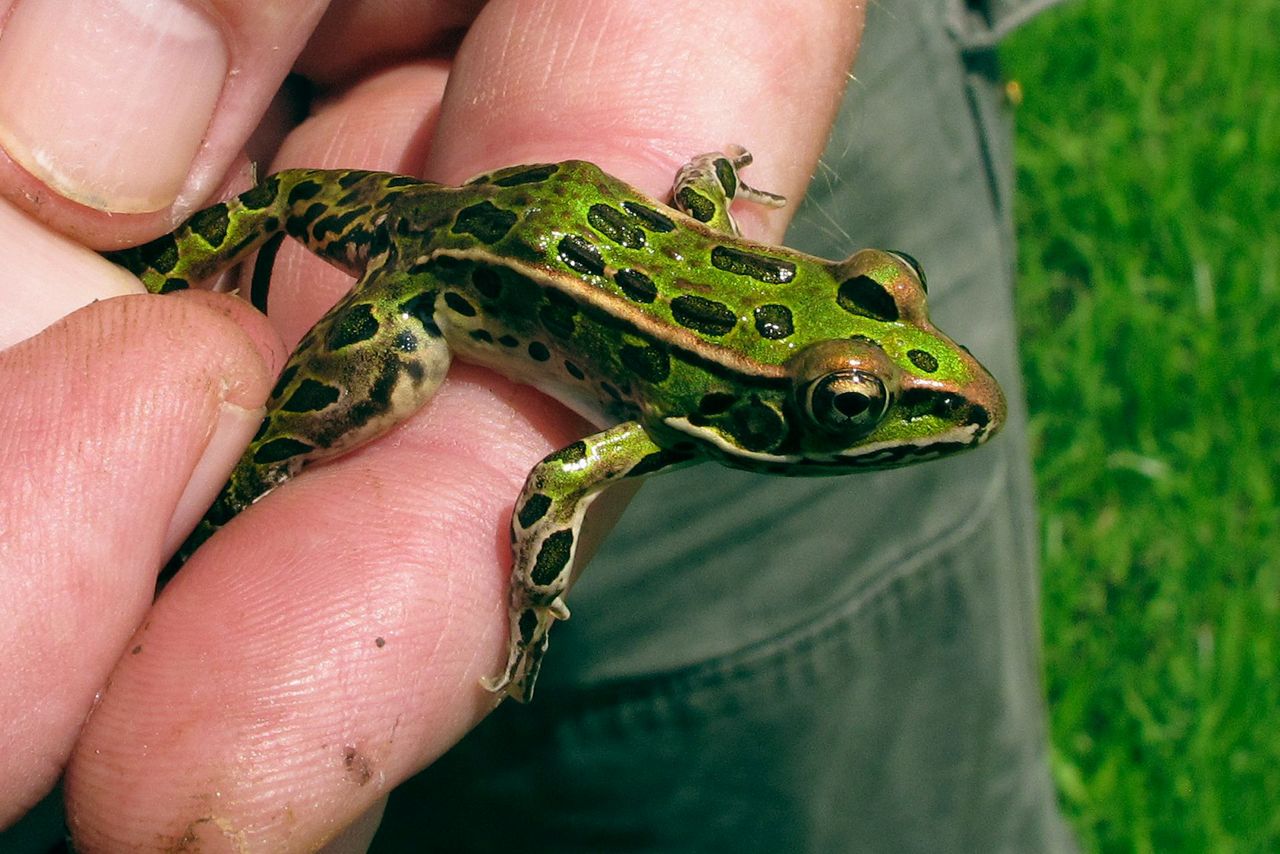SALISBURY, Vt. (AP) — A wet spring has caused one frog population to explode in an area of Vermont where throngs of the amphibians have been hopping through fields and lawns, darting across roads and getting flattened by cars and tractors.
University of Vermont herpetology lecturer James Andrews estimates that the population of the northern leopard frog has leaped a hundredfold in a region near the Otter Creek in Addison County.
"People who have been here you know 30 years or more say they have never seen this many frogs," said Andrews, who is also coordinator of The Vermont Reptile and Amphibian Atlas and lives in the town of Salisbury, where a mass of frogs has emerged. "And it's a result, I think, of not only the perfect storm of conditions this year but also as a result of climate change, the amount of extra moisture that we're getting in this area in general."
Rainfall — or a lack of it — can have big impacts on amphibian populations, said John Kanter, a senior wildlife biologist at the National Wildlife Federation. The region of Salisbury and some surrounding towns near the Otter Creek had a wet spring, and some fields held water into July.
The northern leopard frog lays its eggs in the grassy flood plains of the creek; normally many of those eggs would have dehydrated as fields dried out, but that didn't happen this year. Then a warm spell sped up the development of the young tadpoles, which transformed into frogs just as the fields were drying out, according to Andrews.
"We had this wave of hundreds of thousands of frogs that successfully metamorphosed," Andrews said. "And over the last week, week and a half, they have moved out a mile, mile and a half maybe, two miles in that direction. You can see the dead frog remains on the road."
Andrews and others counted 400,000 dead frogs on a half-mile stretch of road.
The dried-up carnage is still visible and odorous along the road while dark specks in the pavement show where many other frogs were crushed.
Residents have reported not wanting to mow lawns and hundreds of small frogs in swimming pools, Andrews said.
"They're just all over the fields," said LeeAnn Goodrich, of her family's farm. "Even my husband who's been here since he was a child has said the same thing — that he's never seen this many frogs."
The small, young, bright green frogs with brown spots aren't hard to spot. They leap up in fields like popcorn but also are swift and hard to catch. But the population has started to disperse. And no doubt they will be a bounty for wildlife.
"This should be advantage for fish, for herons, for ducks, for hawks, for owls, snakes, raccoons, skunks, opossum," said Andrews. "This should just be a buffet essentially for lots of wildlife."
Copyright 2019 The Associated Press. All rights reserved. This material may not be published, broadcast, rewritten or redistributed.




